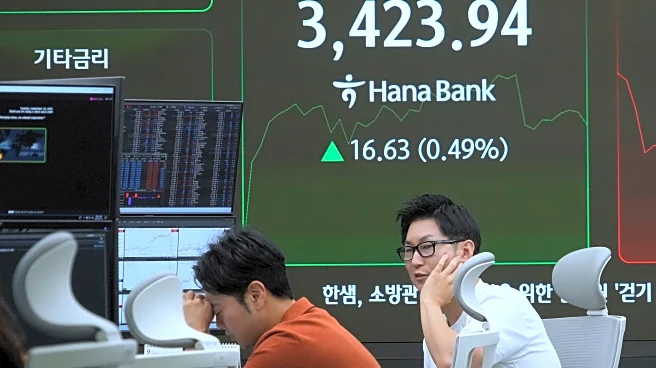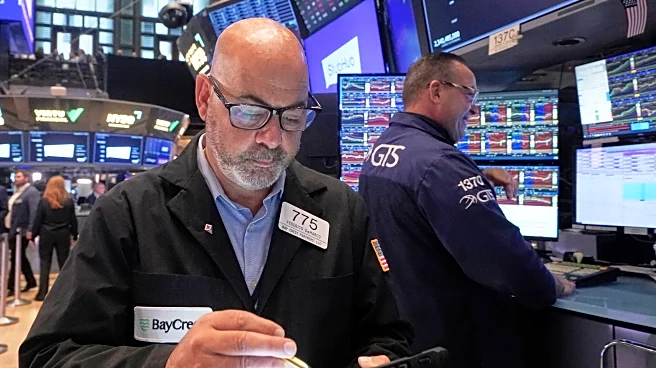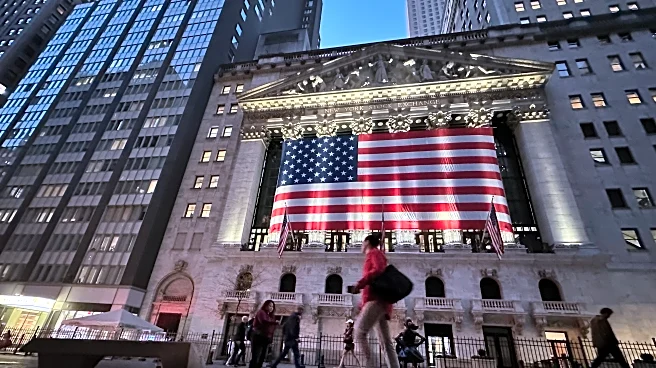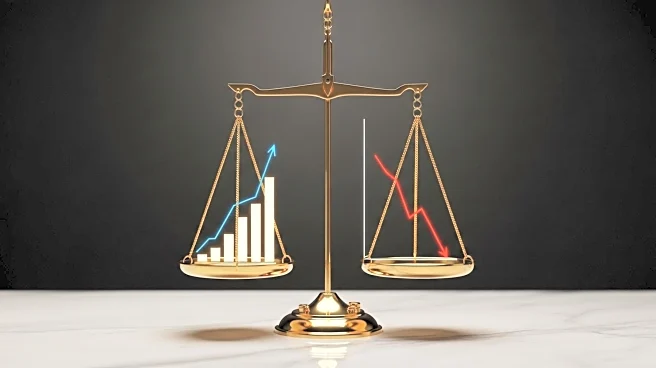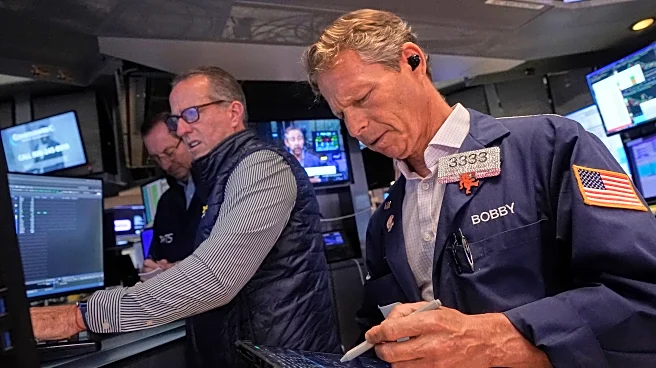What is the story about?
What's Happening?
CNBC's Jim Cramer has advised investors to remain cautious about making significant market moves based solely on the Federal Reserve's recent interest rate cut. The Fed lowered its benchmark overnight lending rate by 0.25% following its September meeting, with indications of two more cuts potentially occurring before the year's end. Despite the rate cut, major market themes have remained unchanged, according to Cramer. The Dow Jones Industrial Average saw a slight increase, while the S&P 500 and Nasdaq Composite experienced minor declines. The Fed's decision was largely anticipated by Wall Street, although some investors were disappointed by the committee's more hawkish outlook for 2026, forecasting only one rate cut. The Fed cited a slowdown in job gains and elevated inflation as reasons for its decision.
Why It's Important?
The Federal Reserve's interest rate decisions are crucial for the U.S. economy, influencing borrowing costs, consumer spending, and business investment. Cramer's comments highlight the importance of not overreacting to rate changes, as broader market themes remain stable. The Fed's cautious approach reflects ongoing concerns about inflation and a weakening labor market, which could impact economic growth. Investors in sectors like technology, artificial intelligence, and banking may find opportunities, while interest rate-sensitive sectors like housing may face challenges. The Fed's actions are significant for maintaining economic stability amid uncertainties such as tariffs and labor market fluctuations.
What's Next?
The Federal Reserve has indicated the possibility of two more rate cuts before the end of the year, which could further influence market dynamics. Investors will be closely monitoring the Fed's future decisions and statements, particularly regarding inflation and employment trends. The Fed's cautious stance suggests a careful balancing act between supporting economic growth and managing inflationary pressures. Stakeholders in various sectors will need to adapt to potential changes in borrowing costs and consumer behavior as the Fed navigates these challenges.
Beyond the Headlines
The Fed's interest rate policy has broader implications for economic inequality and financial stability. Lower rates can stimulate economic activity but may also contribute to asset bubbles and increased debt levels. The Fed's decisions are influenced by complex factors, including global economic conditions and domestic policy challenges. The ongoing impact of tariffs and geopolitical tensions adds layers of uncertainty to the Fed's policy-making process, requiring careful consideration of long-term economic health.
AI Generated Content
Do you find this article useful?




